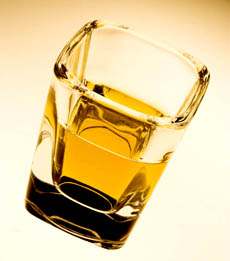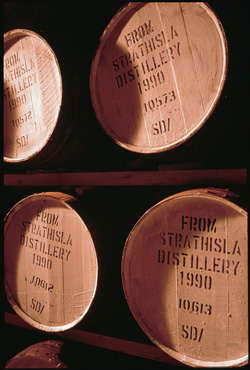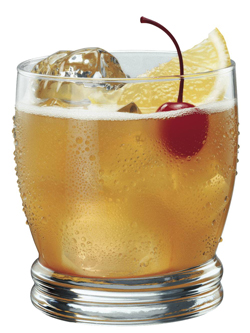A Brief History Of WhiskeyAlthough it was originally considered little more than a distilled beer, whiskey has evolved into a complex beverage made from different types of “mash,” the fermented combination of grains that give each whiskey its distinctive taste. Distillation was discovered in the late eighth century by an Arab scholar known as the Father of Modern Chemistry, Abu Masa Jabir ibn Hayyam (?-803 C.E.). He wondered what would happen if he put wine into an al-ambiq, a round vessel like a tea pot with a tall spout on the top, and boiled it. The vapors rose through the spout, were collected and condensed, creating the world’s first distilled alcohol. In fact, since the al-ambiq was often used to boil powdered antimony into a liquid called al-kohl (used to make the cosmetic kohl), the liquid became known as alcohol and the al-ambiq became the alembic still, which remains in use today. The distillate was originally used as medicine, and remained a secret process, ultimately shared with the monks in Spain for medicinal purposes. Some orders created their own distillations, such as Benedictine and Chartreuse liqueurs. Around 1300 Arnald of Villanova, a professor of medicine at one of the first European medical schools, compiled the first hand-written instructions for distillation, calling the alcohol aqua vitae, Latin for “water of life.” This translates into French eau de vie, Scandinavian akavit and Celtic uisege beatha (ISH-ka BYA-ha—in Gaelic, uisge baugh, ISH-ka BA-ha); in Russian/Polish it is vodka/wodka for “dear little water.” Alcohol was deemed to prolong life and cure ills. As we now know, whiskey has no curative properties, but it could help people “feel better,” or sleep and forget the pain. Irish and Scots disagree over where whiskey originated; Scots claim that whiskey originated in Scotland and attribute the monk John Cor with the first variation of the drink there from barley malt in 1294 C.E. There is also an argument that Irish monks who had traveled to the Near East brought back the technique and applied it to a different medium: the ancient Egyptians had been distilling perfume. As for our word whiskey: The Scotch uisce and the Gaelic uisge, pronounced ISH-ka, became usky and then whisky in English. Until recently, the most popular—and the most readily available—brands of whiskey were from Scotland. Others claim that the Irish were the true innovators of whiskey and that they introduced it to the Scots. Along with Scotland and Ireland, other regions are known for whiskey production, including Canada, a few specific areas in the United States, and several other countries. In Ireland and the United States, the word whiskey is spelled with an “e,” while the British, Scots and Canadians usually opt to drop it.
Types of Whiskey
Go To Page 3: Whiskey Style By Country © Copyright 2005- Lifestyle Direct, Inc. All rights reserved. Images are the copyright of their respective owners.
|

The Nibble Blog
The Latest Products, Recipes & Trends In Specialty Foods
The gourmet guide you’ve been waiting for. New food adventures are served up daily. Check it out!

Food Glossary
Our Food Directories Are "Crash Courses" In Tasty Topics
Your ultimate food lover’s dictionary packed full of information and historical references. Take a look!

Food History
Let the journey begin!
Learn about the history Of 1,000+ Favorite Foods & Beverages Let’s explore the history of your favorie goods together.Let the journey begin!



